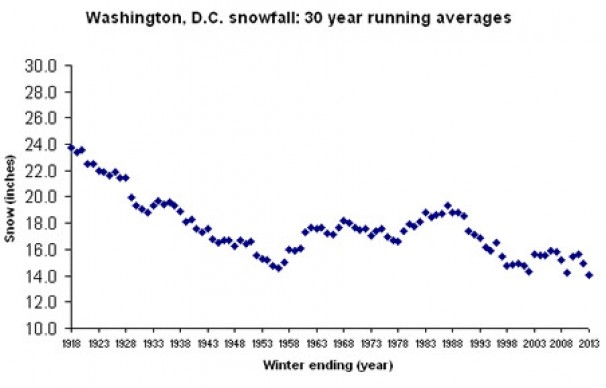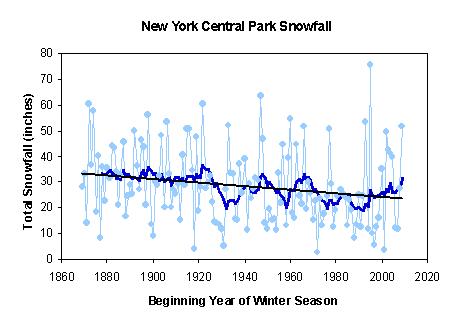By yesterday evening, Boston officially received its greatest seasonal snowfall on record, 108.6 inches. The popular meme is that this is just one more example of human-caused climate change.
But unless you are in elementary school, or just don’t pay attention to what scientists or Al Gore say, you will remember when global warming was going to cause less snow.
If the Boston snows have been the result of global warming, how do we explain the long-term decrease in Washington DC snowfall?…
Or New York City snowfall?…
Those cities should also be experiencing more snow if global warming is to blame.
So, I ask, what would have been blamed if Boston (or New England in general) had received record low snow amounts this winter? Or, if the same region had seen record warmth, rather than record cold?
I will guarantee you — global warming would have also been blamed.
You see, this is the trouble with global warming theory. Everything that happens is folded into it, resulting in an endless list of absurd, and often contradictory, claims about the things that global warming / climate change causes.
Is it any wonder that the public is increasingly dismissive of what we climate scientists say?
A PhD and a computer have, so far, been insufficient tools to provide useful predictions of the future of our climate system. The current state of climate science — or maybe I should say, how scientists have allowed the media and politicians to portray it — is a continuing source of embarrassment to some of us.

 Home/Blog
Home/Blog





